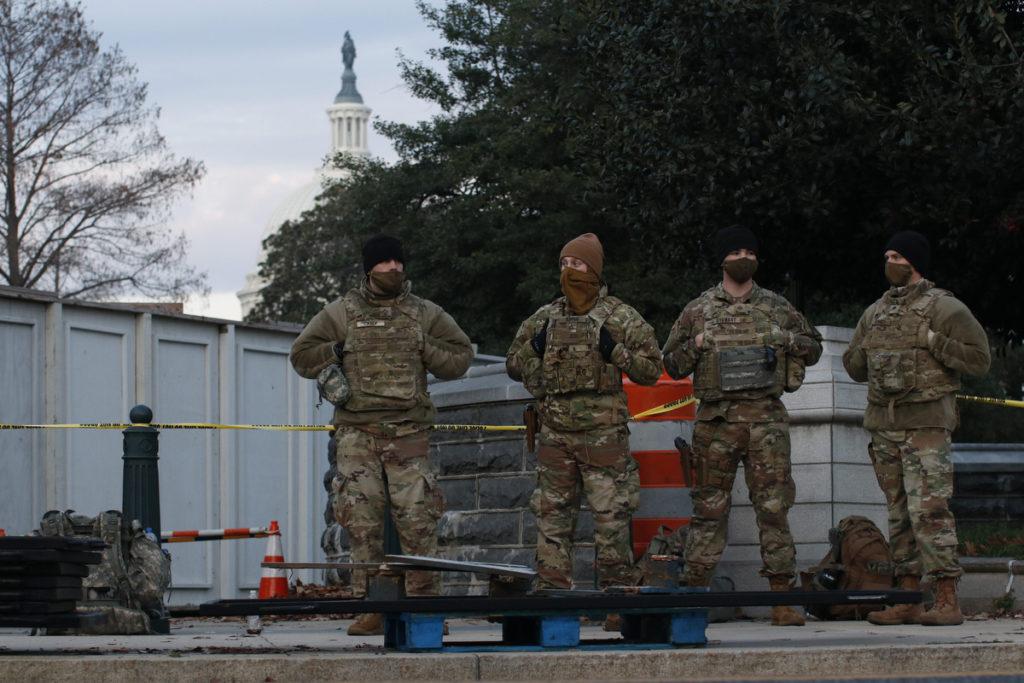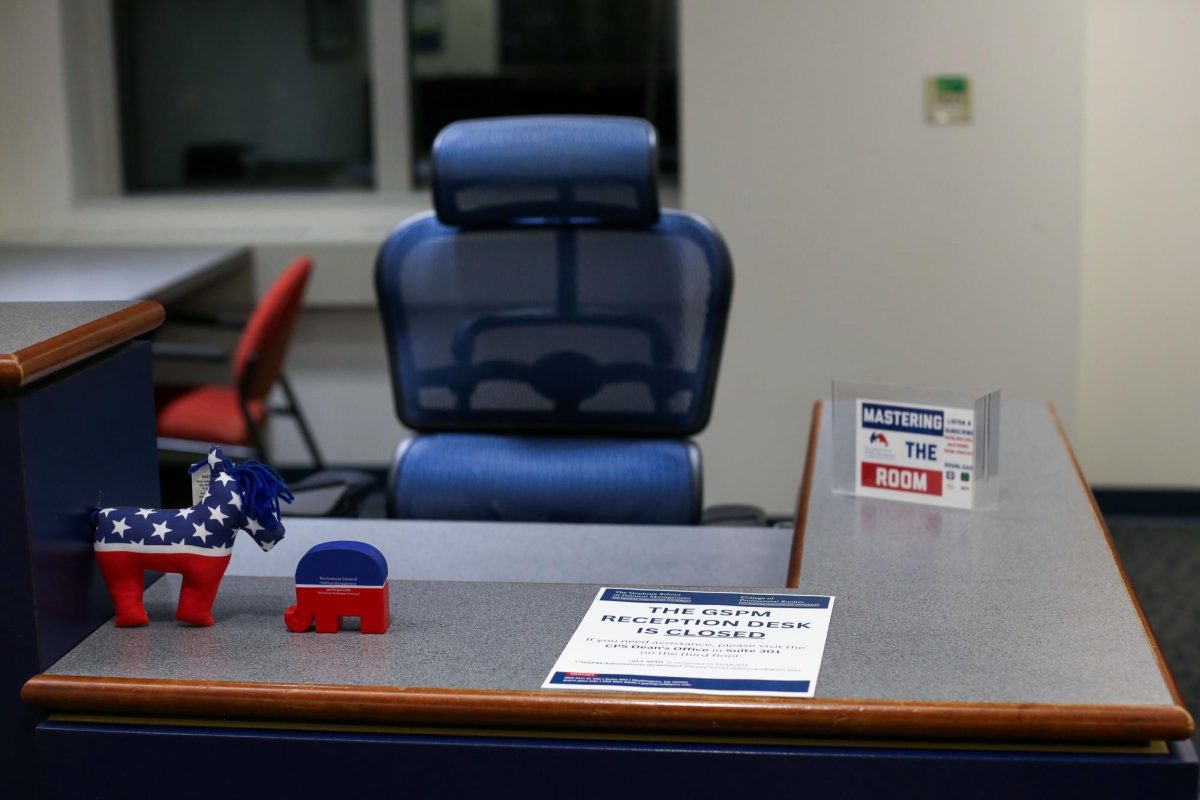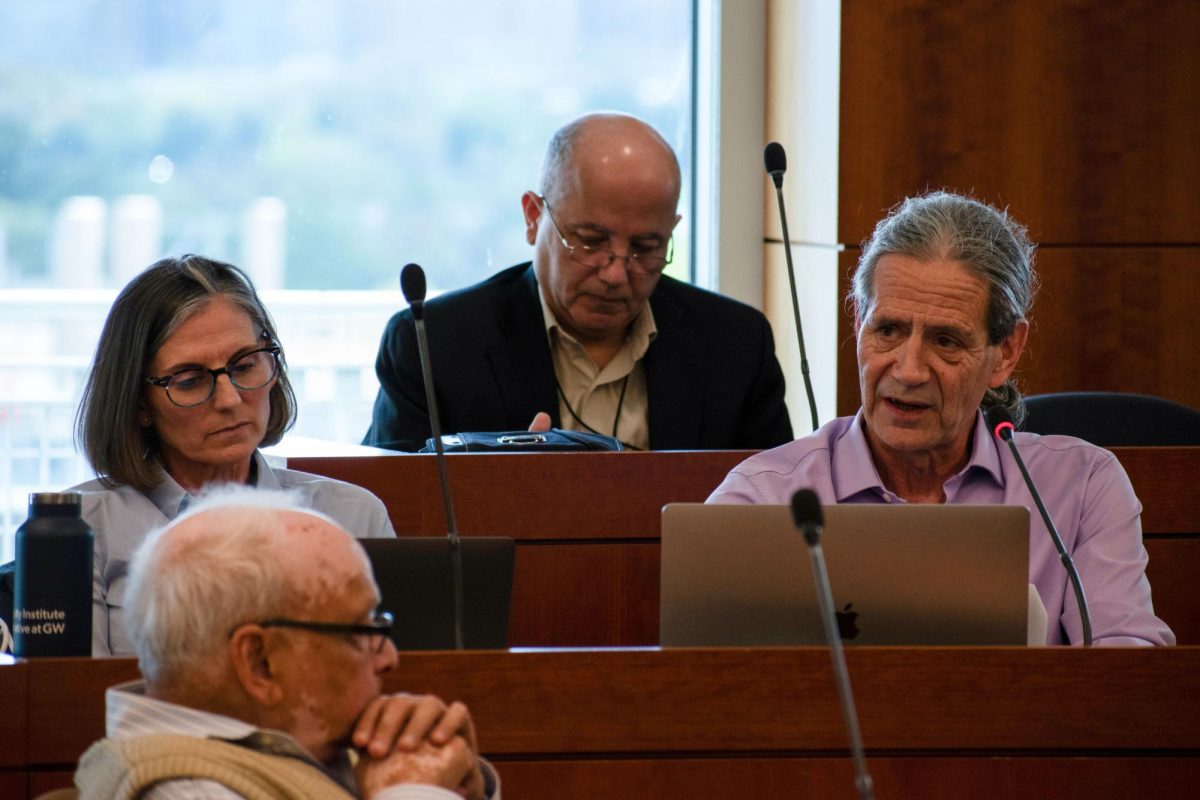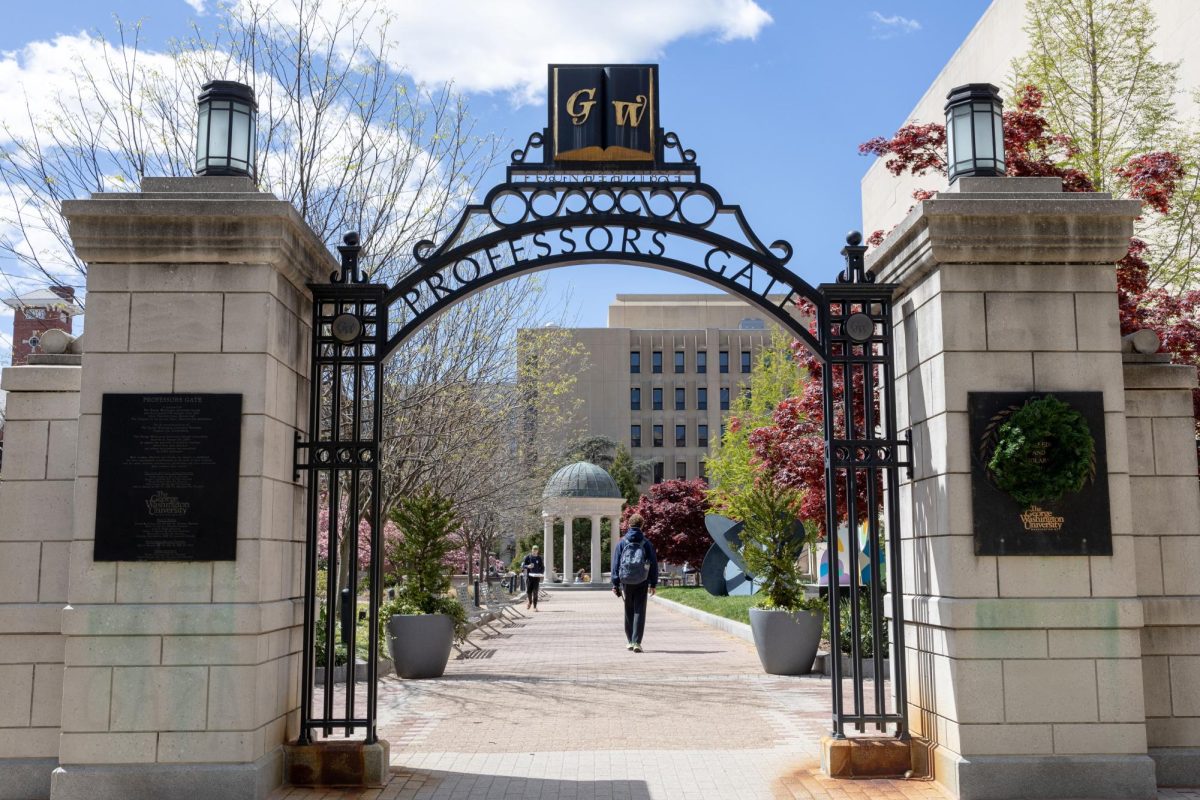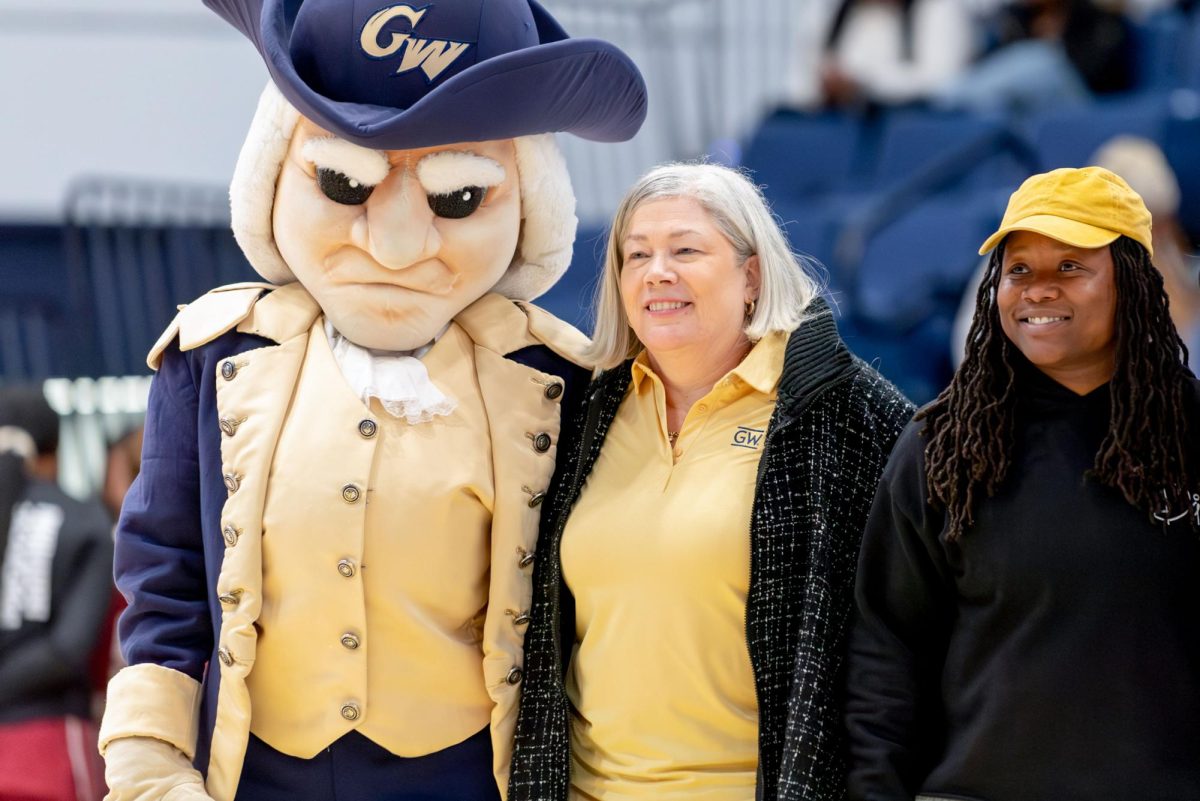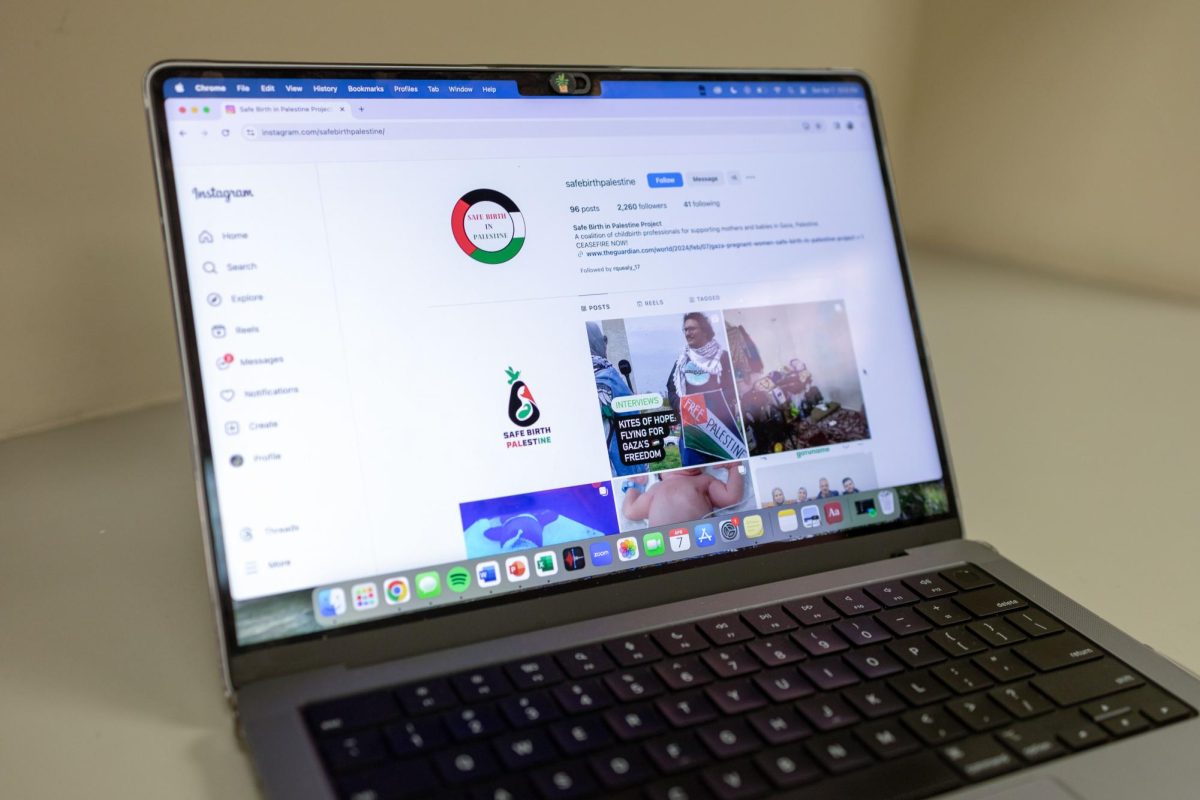2021 was a year of transition, with national headlines and University tensions coming to a head from start to finish.
The year started with the National Guard’s occupation of campus after the Jan. 6 insurrection and continued with a reopening that resumed in-person learning in the fall before a record resurgence of COVID-19 cases spurred by the Omicron variant ended the year with a return to online operations. Administrative shakeups and facilities concerns led GW’s biggest stories this year, headlined by University President Thomas LeBlanc’s departure and the news that Mark Wrighton is set to take over as interim president at the start of 2022.
Take a look back at some of the biggest stories at GW this year:
GW completes reopening during COVID-19 pandemic
[gwh_image id=”1154466″ credit=”Nadia Primer | Photographer” size=”embedded-img” align=”none”]The University welcomed students back to campus after reopening from the COVID-19 pandemic in late August. For some students, the semester presented the first chance to step foot on campus after 17 months of closures.[/gwh_image]
After nine months of pandemic-related shutdowns, 2021 offered the GW community a fresh opportunity to begin a gradual reopening.
About 1,500 students, roughly 15 percent of the undergraduate population, returned to campus for spring housing at the start of 2021 under strict guidelines like weekly COVID-19 testing and a no-guest policy that lasted until May. Officials announced plans for a phased summer reopening in March, during which some summer classes that required an in-person component would be held on campus for the first time since the outbreak began.
The entire student body returned to campus for the fall semester for the first time since March 2020 after officials turned to new public health protocol to limit the virus’ spread, including vaccine requirements and biweekly testing deadlines.
The classes of 2020 and 2021 returned to the National Mall in October to gather for GW’s first in-person Commencement ceremony since 2019. Sen. Elizabeth Warren, D-Mass., delivered the keynote address and LeBlanc awarded the President’s Medal – the highest honor that GW’s president can award – to Anthony Fauci, the director of the National Institute of Allergy and Infectious Diseases.
The semester progressed with minimal coronavirus-related disruptions until the spread of the Omicron variant reached D.C. in December. After officials recorded the variant among GW community members, COVID-19 cases surged on campus and prompted officials to cancel in-person exams and events for the remainder of the fall semester.
Transitioning to new leadership
[gwh_image id=”1037322″ credit=”Hatchet File Photo” size=”embedded-img” align=”none”]LeBlanc faced mounting calls for his resignation leading up to his decision to step down in May. Mark Wrighton will replace LeBlanc at the start of the new year with an interim term of up to 18 months.[/gwh_image]
The GW community will enter 2022 with a different University president and provost from the top leaders at the start of 2021.
Officials announced in May that LeBlanc would step down at the end of the academic year, which came after widespread pushback against his leadership in the months prior. Former Provost Brian Blake, who previously worked with LeBlanc at the University of Miami, left GW in June to become the president of Georgia State University.
LeBlanc faced several calls for him to resign from GW community members leading up to the end of 2020, but the Board of Trustees largely maintained its support for the president through his tenure up until his retirement announcement, lauding his efforts to lead the University through the pandemic.
Board Chair Grace Speights announced at a Faculty Senate meeting in October that Mark Wrighton, the former chancellor of Washington University at St. Louis, would take over as interim president at the beginning of 2022 and hold the job for up to 18 months.
Insurrection prompts national security concerns
[gwh_image id=”1133534″ credit=”Zach Brien | Staff Photographer” size=”embedded-img” align=”none”]A person drips milk into rioter’s eyes to quell the pain of pepper spray during the insurrection at the U.S. Capitol Building Jan. 6.[/gwh_image]
A violent mob of supporters of former President Donald Trump stunned the country on Jan. 6 when it stormed the U.S. Capitol Building in an effort to disrupt Congress’ certification of then-President-elect Joe Biden’s 2020 election victory, leading to the deaths of five people. The insurrection forced GW officials to close the Foggy Bottom campus from visitors and increase the security presence on campus.
Thousands of National Guard troops stationed in D.C. during the buildup to Biden’s Jan. 20 inauguration, and Foggy Bottom was subject to the Secret Service’s security zone established following the insurrection. Armed officers and National Guard vehicles were stationed outside the Science and Engineering and Funger halls, and campus residents received special GWorld cards that confirmed their identities and D.C. residency.
Students condemn acts of antisemitism
[gwh_image id=”1152092″ credit=”Skylar Epstein | Staff Photographer” size=”embedded-img” align=”none”]About 400 students processed through campus in early November after news spread about the desecration of a Torah scroll at Tau Kappa Epsilon’s on-campus house during a break-in.[/gwh_image]
Controversy arose after Halloween weekend when members of Tau Kappa Epsilon reported that a Torah was vandalized with laundry detergent at the chapter’s on-campus townhouse. The incident garnered national attention, and LeBlanc released a statement condemning acts of antisemitism.
Hundreds of community members, led by members of TKE, protested the act of antisemitism during a march to Kogan Plaza, where the group read from the Torah and listened to speeches condemning the acts of hatred. Students expressed hope that despite the desecration, the protest would prove that Foggy Bottom is a safe place for Jewish students.
Facilities concerns across campus
[gwh_image id=”1147233″ credit=”Danielle Towers | Assistant Photo Editor” size=”embedded-img” align=”none”]Residents on Townhouse Row were instructed to evacuate their buildings in September after residents in two units reported “environmental concerns” to officials earlier in the week.[/gwh_image]
Nearly 200 residents, all members of Greek life chapters, evacuated Townhouse Row in September after officials detected water leaks that created conditions “conducive to biological growth” and mold. Several Townhouse Row residents also visited hospitals for flu-like symptoms like mild coughs, runny noses and coughing up blood.
Following the evacuation, more than 75 students and faculty across campus said they identified what appeared to be mold in residence halls and academic buildings. They said the apparent mold gave way to illness, relocation and an overflow of FixIt tickets for facilities staff – many of whom were laid off in fall 2020.
Students grapple with GW’s handling of Title IX cases
[gwh_image id=”1149806″ credit=”Grace Hromin | Senior Photo Editor” size=”embedded-img” align=”none”]About 75 students marched by the site of Commencement on the National Mall in October to to silently protest GW’s handling of sexual assault cases.[/gwh_image]
Former Student Association President Howard Brookins stepped down in January after sexual misconduct allegations sparked calls for his resignation from more than 50 current and former student leaders. In a letter, Brookins said he was resigning for his “health and so many other reasons” but denied the accusations.
A group of about 75 students protested the University’s handling of sexual assault cases at Commencement in October, calling on officials to bar alleged assailants from campus and to implement a more transparent Title IX process.
Officials announced in November that they would add new staff positions in the Title IX Office and the Office of Advocacy and Support and expand training measures for the GW community in response to student concerns. Students held another demonstration on campus earlier this month in Kogan Plaza where they hung t-shirts bearing stories of sexual assault survivors to raise awareness and pressure officials to fulfill their planned reforms.


